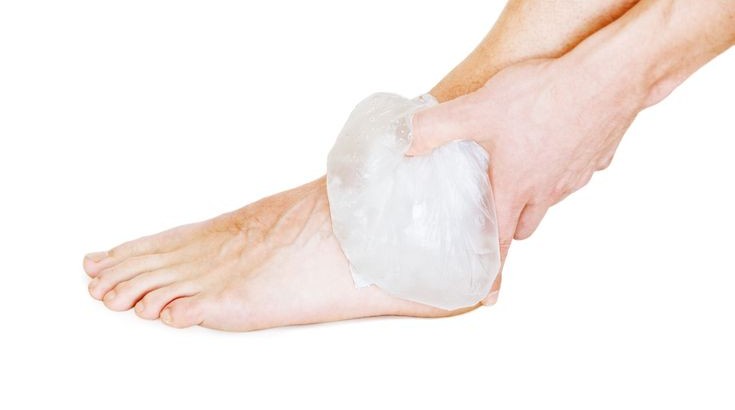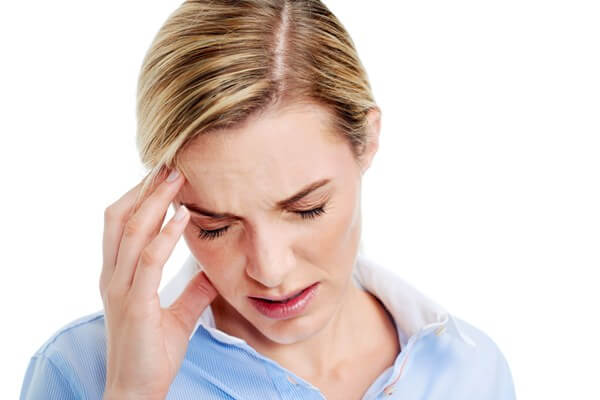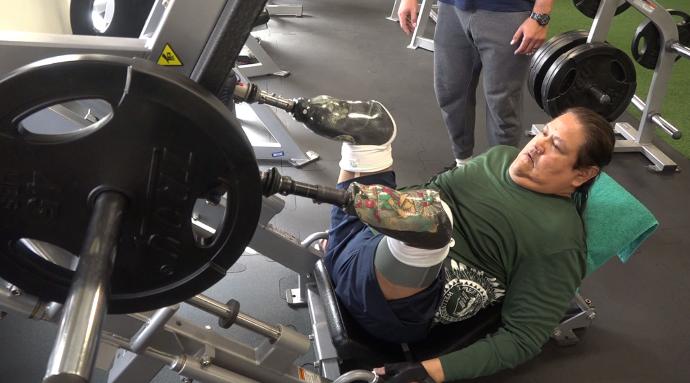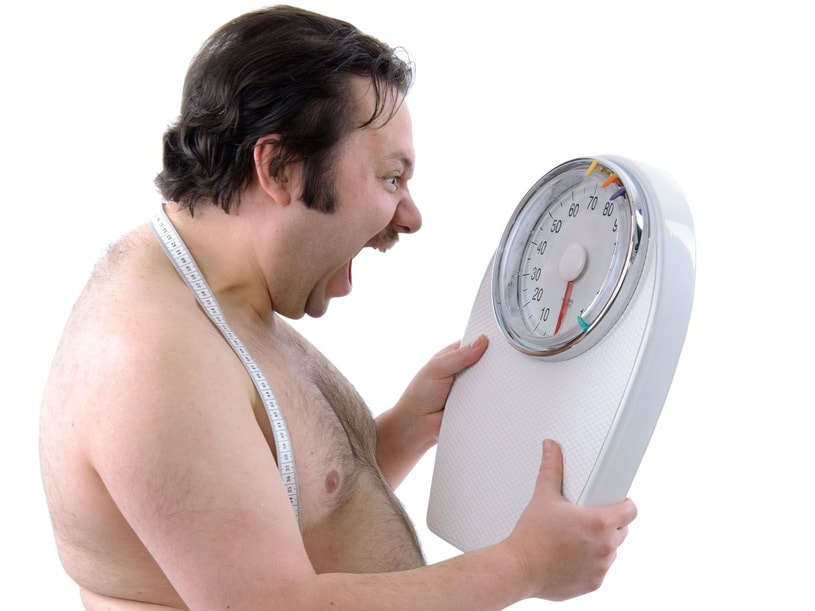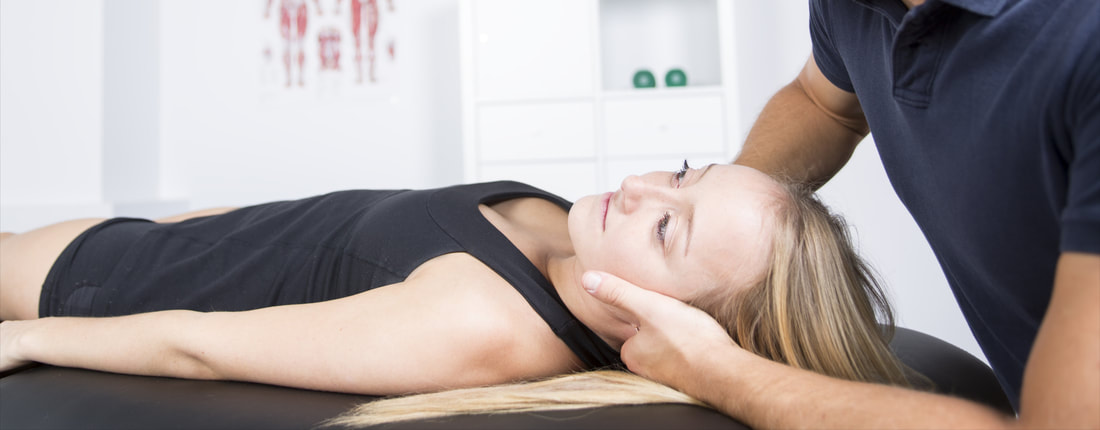|
Obesity has become a grave problem, just like diabetes or heart disease. It is one of the costliest and devastating health problems and can leave us deep down the dumps if not treated immediately. An effective treatment plan by primary care providers is problematic sometimes, as they are challenged with delivering appropriate treatment counseling in a limited time frame.
Although lack of time is the most-quoted reason for ineffective weight counselling, there is not much proof supporting that more time beyond the usual 5 to 10 minutes of counseling is advantageous. The tragic part in such counseling sessions is that, physicians recommend clients to eat less, move more and lose weight (obese patients have come to the physician in the first place to lose weight!) and this is not going to serve any purpose. For instance, when a client approaches a physician for obesity treatment and the physician sends him/her off with one small phrase of ‘We will do it’, what is the outcome? It is no better than telling a person with depression to ‘cheer up.’ Let Go of the Conventional Idea Even physicians speak with a mindset that obese people are lazy people who eat too much without any willpower to maintain a healthy diet. Hence, they tend to spend minimum time and speak very little to discuss effective treatment options for patients with obesity. Weight loss is a difficult but feasible process which poses challenges, both for the patient and the physician. When chemotherapy or insulin injection is not effective on a client we never blame the client but the treatment! But in the case of obesity treatments, it is almost always the client who is blamed for lack of results. We need to understand that obesity is a complex process that involves genetic, developmental and environmental factors as well, along with the client’s effort. Don’t assume falsely that these factors will prevent weight loss, but only try to understand that sometimes we need to work harder to get our perks. Obesity is not a lifestyle choice but a dysfunction of a highly regulated system. Positive ideologies and proposals encourage clients to work more towards their goal rather than demotivating them using pejorative words that may burn their intentions. Explore Different Options While we know that a 5-10% loss of body weight can decrease the patient’s risk of chronic diseases, not every patient’s body responds in the same way. Patients who do not respond positively to behavioral modification can be subjected to lifestyle interventions. Morbid obesity cases are mostly treated with bariatric surgery which can assure the client of a 20-35% body weight loss after 1 year. It is always better to remember that one size does not fit all. Similarly, one diet or lifestyle change is not effective for all people with obesity. The effectiveness of the treatment depends on how we treat the patient with excess weight and be compassionate about their condition, similar to the way we treat patients with other health problems. While a 20-minute counselling session with a registered dietitian nutritionist may not solve your problem, it can be a fresh start to a long process of weight loss journey. To get in touch with reputed RDNs to lose weight in a healthy way and stay fit, please visit the website www.firsteatright.com. A fracture is a broken bone and the bone might be completely or partially fractured depending on the cause most frequent of which include accidents, falls or sports injuries. Fracture can be of many types and one of them is hairline fracture.
Hairline Fracture Tiny cracks on the bone that develop on the foot or lower leg (less commonly on the upper limb) are called hairline or stress fractures. This happens mostly due to overuse or repetitive jumping/running actions performed in sports events which is in direct contrast to larger bone fractures that occur due to conditions such as a fall or an accident. Hairline fracture is common in those individuals who are seriously into physical activity and who do repetitive movements that can put a strain on a bone or a group of bones. While they are hard to find out initially, the pain starts slowly but develops over time into an intense one. Causes Bones are rigid but do have a certain degree of elasticity beyond which they break (just like our ruler scales). They can withstand some of the impacts that activities such as walking, jumping or running have on the bone. But over time the impact can result in cracks in the bone called as hairline fracture. A classic example is a long-distance run that can strain the lower leg, foot and ankle in course of time which in sometime can develop into hairline fracture. Risk Factors Sports such as basketball, tennis, ballet, football or rugby, soccer, hockey, ballet and field/track sports are significant risk factors for a hairline fracture. Even if the person is performing the same activity if the duration, frequency or intensity of the activity changes it can pave way for a hairline fracture. One must also remember that these injuries can occur irrespective of the physical activity performed. Factors that increase the risk of a hairline fracture include:
While a severe fracture sends a seeping pain throughout the body, hairline fracture symptoms are different. The pain here intensifies as a person engages in regular activities that strains the injured bone affecting a person’s mobility. Other common symptoms include swelling, bruising and tenderness. Diagnosis & Treatment The physician does a physical examination looking out for the person’s reaction when he/she applies pressure on the affected area. Further confirmation is done with the help of an MRI or X-ray. While a hairline fracture is a minor complication leaving it untreated can lead to a non-union fracture. Most hairline fractures heal by themselves when the person doesn’t apply strain over the affected area and refrains from using it for any activity. For up to 48 hours the patient is suggested to elevate the affected area and treat it with ice whenever possible. Once pain starts decreasing in a course of a week or two it is suggested to reintroduce weight-bearing activities. Never involve in any sports activities during the recovery process which takes anywhere between 6 and 8 weeks. The doctor might suggest using a protective footwear, splint or crutches to minimize the strain applied on the fractured bone during movement. In extremely rare cases, a surgery might be suggested. Prevention Hairline fracture is impossible to prevent in those engaging in frequent sports activities or suffering from conditions such as osteoporosis. Generally, the risk of hairline fracture can be reduced by:
A menstruating woman is like a boiling pot ready to explode with emotions. It is not the woman but her hormones that are to be blamed for this! How about coming across a group of women who menstruate at the same time? It might seem highly unlikely but it does indeed happen in every part of the world unofficially termed as ‘period syncing.’ Quite new to many, this term has been highlighted in many of our web series enlightening people’s knowledge about synced menstruations. For those unaware, period syncing is a term to define women who spend more and more time together that they start menstruating on the same date every month.
The McClintock Effect Though the idea of period syncing was passed on from one generation to the other (great grandma to grandma, grandma to mom, mom to child and so on) the theory was conceptualized way back in 1971 by a researcher named Martha McClintock. The study conducted on 135 women who lived in a dormitory for a period of over 6 months was published in the reputed journal ‘Nature.’ The study found a definite synchronization among roommates and groups of women who identified each other as their closest friend than among random pairing of women-while the difference in period start day was almost 6.5 days apart in these besties and it was reduced to less than 5 days at the end. Though the researcher did not give scientific explanations backing the theory, the most prevalent theory was that it was an evolved strategy for preventing women from becoming a harem for a man (https://www.bbc.com/news/magazine-37256161). Period syncing was also called as the ‘McClintock Effect’ named after the researcher and this study was quoted often until 1978 but a researcher in 1992 pointed out serious mistakes in the study. Replication of the study often did not bring out the same desirable effect but it was not until 1999 that a researcher called Strassmann brought into limelight a fundamental flaw in the period-syncing logic. According to him, women commonly have a 28-day cycle and the maximum that two women can be out of phase is for 14 days. Onset would be 7 days apart and more than 50% times they should be even closer. Menstrual cycles last from 5-8 days and hence, it is not uncommon to see friends/family experience overlapping period cycles. According to his theory, most women have their periods at the same time as other women but we simply don’t know because women don’t keep going around publicizing their period cycles. Yet another study in 2006 on a group of 186 women living in a dorm in China showed that women don’t sync up their periods. But another study in 2017 found that 44% participants involved in the study experienced period syncing. Lunar Theory The word ‘menstruation’ is derived from a combination of Latin and Greek words meaning ‘moon’ and ‘month’. According to a 1986 study, 1 in every 4 women have periods during the new moon phase and it is hence, not highly surprising that a group of women staying together might experience similar period cycles. There are also beliefs among women that when women spend a significant amount of time together their periods are synced to one of the women’s cycle and it is usually in line with the dominant woman. Though there is no theory behind the idea we have always as a society believed in dominance and hierarchy and it is no surprise that it is the dominant woman’s cycle that’s become the norm for other people in the group. Of late, the market has been loaded with a variety of period tracking apps such as Clue, Glow and My Calendar none of them provide accurate data. Period sync might happen only due to laws of probability rather than science. For instance, you have periods for 1 week of the month and you live with four other friends the odds are that at least two of you will have your period at the same time. Living with someone for a year or so can make you experience a sync in period cycles only due to mathematical calculations and there is nothing more to this. While you might feel extremely close with your roommate or bestie as you experience period cycles too together it is nothing more than mere coincidence. References Why the Myth of Period Syncing Wont Go Away: https://www.theatlantic.com/family/archive/2019/09/period-syncing-almost-definitely-isnt-real/598714/ The Myth of Period Syncing: https://www.nytimes.com/2019/06/06/well/the-myth-of-period-syncing.html Women who Spend More Time Together End Up Having Periods at the Same Time. Myth or Fact? https://timesofindia.indiatimes.com/life-style/health-fitness/health-news/women-who-spend-more-time-together-end-up-having-periods-at-the-same-time-myth-or-fact/photostory/71292326.cms Even today the society is in the presumption that heart attacks strike only those above the age of 60 and that women are not victims to it most of the times. If this has been your ideology too until now please wake up! We are living in 2019 where diabetes is more common among children, there are an equal number of obese kids and adults in the society and where even youngsters die owing to unexplained causes of death more commonly than before! This is an era of diseases, infections and ailments that’s attacking many of us owing to our very own sedentary lifestyle practices and unhealthy eating routines! Heart disease is one such chronic disease that affects a majority of the population owing to rise in obesity/overweight rates and inactivity. But sometimes, a heart attack is not just a heart attack but is the result of spontaneous tearing in the coronary artery wall that happens due to SCAD-spontaneous coronary artery dissection. You might think that SCAD is just an addition alongside atherosclerosis (plaque buildup in arteries that restricts blood flow) that causes blockage of blood vessels leading to a heart attack but in SCAD, the victims are usually women especially otherwise healthy women in their 40s or 50s.
The artery wall has three layers and when a tear occurs the blood passes through the layers and gets trapped in the innermost layer bulging inward. This causes a block or narrowing of the artery resulting in a heart attack as the blood does not successfully reach the heart muscles. Most of the times it is atherosclerosis that’s the reason behind a heart attack and when a young patient does not exhibit any symptoms of it but does show symptoms of heart attack it might be SCAD. Although according to a 2018 statement by the American Heart Association (AHA) SCAD is the reason behind just 1-4% of all incidents of acute coronary syndrome its impact in women is highly disproportionate and AHA has concluded that SCAD might be responsible for up to 35% of heart attacks in women aged 50 or below. Science Behind SCAD Experts aren’t yet sure how SCAD happens but there are some studies that show a hormonal link where post-partum women (30% SCAD cases have this background) and those nearing or experiencing menstruation are at a greater risk. Estrogen and progesterone hormones can weaken blood vessels increasing the risk of tears as the one seen in SCAD. There are also theories that SCAD might be the number one reason for heart attack in pregnancy and post-partum period as this is the time when women experience fluctuating hormone levels. Some studies show that many of the SCAD patients have fibromuscular dysplasia where there is an abnormal cell growth in the arteries that causes bleeding, narrowing or tearing in the artery walls (aneurysm). It is commonly observed that SCAD patients suffer from mental conditions such as depression, chronic stress and anxiety at a higher rate compared to other heart attack patients. It is also likelier that sudden stress that’s intense (such as when you hear the sudden demise of a loved one) can cause increase in blood pressure and heart rate that can end up in arterial tear. Coincidentally, women suffer more from depression and mental health conditions compared to men owing to numerous conditions such as the pressure to put the family’s priorities above their personal needs, lack of power in the society, absence of economic stability and victims of gender discrepancies and gender-based violence. In men, it is mostly physical exertion that triggers SCAD in them that includes anything like lifting something extremely heavy or running extremely hard in the race. The distressing part about SCAD is that it is very difficult to diagnose before it causes damage to the heart as it silently does its job without showing any warning signs. Hence, this makes it even more necessary for the common man to be able to diagnose the symptoms of a heart attack that include chest tightness, shortness of breath, profuse sweating and dizziness. Other upsetting factors include the fact that its women who comprise of 90% of the SCAD population, SCAD doesn’t have risk factors such as high blood pressure or diabetes that’s typical of other cardiovascular diseases, occurs in those who have not reached the normal heart attack age which is 70 and might strike people who have not even reached the age of 55 where typical risks start arising. Treatment for SCAD depends on the triggers and there are higher chances of recurrence which makes it necessary that these patients reduce the risk of heart disease as much as possible by leading a clean and healthy lifestyle. Learn how to prevent the risk of a heart attack with the help of the tips available at www.firsteatright.com. Being young doesn’t give you the privilege of a healthy heart. If you are a young woman who suffers from chest pain it is mandatory that you meet your physician and discuss about it.  A Sweet Tooth for Fruit? A Sweet Tooth for Fruit? You are always the one who looks into the ‘Desserts’ page of the menu card, visits the desserts section in a buffet first, can’t wait for the sweets and kheers to be served during marriages and gets excited when your family plans for the forthcoming function or pooja as there is ought to be an array of sweetmeats! If these descriptions perfectly suit you then you fit the bill for the definition of a person with sweet tooth. In an era where we love our lives to be thrilling, full of cheerfulness, action-packed, fast-paced and exciting a dash of sweetness would indeed add more joy to our living. A celebration, family reunion, good news or anything positive starts with some sweets and even a newborn is given some sugar as soon as he/she is born to welcome the baby unto this world. When such is the power of sweet and sugar why are we opposed to the view of having a sweet tooth? I have a sweet tooth and so does my daughter! But isn’t it practical that each of us have a sweet tooth or like something sweet-maybe the hot jamuns or the creamy rabdi! How would the cola industries and our nearby confectionaries thrive if we all start eliminating sugar from our everyday routines? Beyond all these, don’t we need them for procuring energy and carrying on with our day to day activities? It’s been observed that sugar preferences are influenced by age as well as gender. Kids have a pronounced sweet tooth compared to parents maybe in the footsteps of the popular bear Winnie the Pooh who loves to lick honey from the jar! But not all animals have sweet receptors and the best example are cats which would lick milk anytime or even sweat on your hand than eat something sweet. Finally, we always have a misconception that every overweight/obese individual has a sweet tooth but don’t you think there’s more to obesity than sweets and sugar? Sugars: An Essential Ingredient in Life Sugar indeed is a regular part of our lives and almost 10% of our energy needs must come from sugar. The present-day lifestyle practices and eating routines have surpassed these demarcations with the broader baked good, confectionaries and gourmet foods available most of which contain abundant sugar, fats and ample calories. If you look deeper there is nothing unhealthy about sugar and we should never try to bring the numbers down to zero in our diets. While sugar has been linked with increased risk of tooth decay, obesity, fatty liver disease, type 2 diabetes, heart disease and premature death the problem does not lie with the fact that humans consume sugar but with the fact that they are eating too much of this white devil. Not all sugars are created equally. There are our very own fruits that occupy top priority in the sugar list whose consumption can affect weight changes but it is also full of nutrients. The physicians and health experts recommend individual to have at least 5 portions of fruits daily to fulfill nutrient requirements which is not present in other sugar-rich confectionaries, cakes and biscuits. Fruits are rich in glucose and individuals do like fruits but nowhere in the world do we call individuals who love fruits as having a sweet tooth! Sugar is nothing but carbohydrates-a macronutrient needed for our daily life but whose effect depends on the choice of the carbs that we make! Mankind needs vitamins, minerals and other nutrients to survive a healthy life but sugar has crept into most of the foods prepared and sold. A documentary on sugar intake showed that if all the sugar-containing foods were removed from a supermarket there would be only about 20% of products remaining to be picked (https://www.nytimes.com/2019/07/22/well/eat/the-downside-of-having-a-sweet-tooth.html?rref=collection%2Fspotlightcollection%2Fwell-nutrition). This makes much sense if you think-the biscuits, cornflakes, muesli, breads, chocolates, canned sweets and juices are all filled with sugar. Having a sweet tooth might be considered good for the mood as indulging in your favorite cake or dessert helps to elevate your mood but only in the short-term. But a study now shows that there is a link between sugar and mood disorders, especially among men-higher the intake of sugary foods likelier it is to have opposite effect on mental health of individuals in the long run. Sugar too might be an addiction and the sweet tooth is not just an interest but might become a passion in the long run. The unavailability of your favorite candy or absence of a fizzy cola might cause frustration and irritation to build upon. Also, eating more and more sugar might cause your taste buds to yearn for more sugar than previously to send signals of fulfillment to the brain. The body becomes more resistant and less sensitive to sugar intake. Such increased intake of sugar might force your pancreas to work overtime and as you eat more there is a greater quantity of insulin released in the body. Having a sweet tooth is not a sin and it is not wrong to indulge in sweet treats occasionally to satisfy your sweet tooth. But all that is needed is to prevent this from becoming a habit. Fruits are the best sweet treats and if a person accepts that he/she has a sweet tooth for none other than our very own fruits that’s the finest reply one can expect! Eat a piece of cake, drink a soda and munch on a choco chip muffin occasionally to feel good. But also ensure to stay away from white sugar as much as possible to stay healthy! References Monday’s Medical Myth: Blame it on the Sweet Tooth: https://theconversation.com/mondays-medical-myth-blame-it-on-my-sweet-tooth-6740 Is it Time to Start Cutting Down on the Sweet Stuff? https://www.express.co.uk/life-style/diets/453684/Is-your-sweet-tooth-making-you-fat-How-you-can-cut-down-on-sugar Do you remember that your hi-rise building does consist of stairways too apart from the multiple elevator options available ravishingly at the lobby? Mankind is easily swayed away by the luxuries available in today’s world and the elevator is one! Even a 3-year-old child prefers the elevator to the staircase. But now, we’ve been offered a new suggestion-how quickly you climb a flight of stairs determines how long your lifespan could be. Whoa! What an ingenuity in calculating your lifetime with a simple experiment as easy (or as difficult for those who’ve lost touch altogether) as climbing a flight of stairs.
Climb Fast, Help Health Long Last There is no way to predict our future as it is the gift of nature & life surprises us with twists and turns at every juncture! Still, we can estimate roughly few important things regarding our health and one of the finest means are the stairs. The first thing that we look for while on a lookout for an apartment is the elevator (especially the backup generator that keeps it running 24*7) even if we are purchasing a flat on the 2nd floor. The look on our face while the lift fails rarely and the huff and the puff given out of breathlessness even before climbing a flight of stairs says it all about your health. Are you one of those who can climb a flight of stairs without pausing or going out of breath? If not, you are into serious trouble. A new study conducted came with the result that people who can climb four flights of stairs without a pause (in less than a minute) can avoid early deaths in life. Oh no! Climbing one floor is hard work and climbing four floors is a miserable task! But mind you, the research finds that people who struggle to finish this task are at a higher risk of cardiovascular diseases and risk from death due to cancer. This is an easy test that requires no expenses and not much time (only less than 1 minute) but only your efforts. You can try it at your home, office or even a restaurant! A few years back we had an experiment that helped individuals realize that climbing steps can prolong life. Avoiding the escalator/lift is a great was to improve fitness, reduce weight and maintain blood pressure levels. The study also revealed that this reduced premature death due to any cause by as much as 15%. If we had realized the importance of climbing stairs, we would have never reached a stage where the same task exists as a predictor of longevity and heart health. Face the Reality of the Staircase Drama Health experts, dietitians and nutritionists recommend individuals to workout at least for 150 minutes a week which means each of us must be active for at least 30 minutes on 5 days of the week. For all those cribbing on lack of time for their health, health experts have even suggested a few practical tips to fulfill at least some parts of their required activity levels. This includes many such as parking the car further away from the parking lot, going to a person directly and conveying the message at office instead of using the phone and above all, using the stairs instead of the elevator. Individuals who have been following at least these guidelines diligently are at a greater chance of escaping from problems related to serious health issues. Get more ideas at www.firsteatright.com on incorporating fitness into your daily life. Even otherwise, if you have failed the test this is not the end of the world. The test is a reminder of your lack of efforts, failure is the best teacher and maybe its time to visit the doctor. Speak to the doctor regarding your test, get to the real problem at hand and make up your mind to overcome the hurdles by all means. But there are always exceptions. Its recommended to have a word with your physician especially when you already suffer from a health-related condition, is above the age of 40 or suffering from knee problems before taking up the stair test. Exercising is imperative for a healthy living. It can be as simple as walking or it can even be a sport that interests you. Leading a healthy lifestyle, staying on a nutritious and well-balanced diet and above all, exercising regularly are the finest ways to ensure a health, long life devoid of illnesses. A headache is one of the most common pains experienced by humanity every day in life. Some individuals suffer from it at least 5 days in a month and for some others it is a rare occurrence. Almost half the population in this world suffers from a headache at some point of time in life. Most headaches don’t indicate any serious medical problem and often arise as a result of stress, fatigue or allergy. Migraine headaches and tension headaches are common while some other people feel the pain only on the right side of the head which causes worry in individuals.
Right-sided Headache Causes Allergies, infections such as sinus, fatigue, head injury, muscle strain, tumors and variations in glucose levels in the body can lead to pain on one side or both sides of the body. Neurological issues such as occipital neuralgia and temporal arteries too can cause a right-sided headache sometimes. Certain medications can trigger a headache (rebound headache) and this is one of the most common causes for a headache. Certain types of headaches too affect the right side of the head: Migraine headache commonly strike the right side of the head accompanied by a throbbing pain, blurry vision, nausea, sensitivity to light and vomiting. Several factors trigger a migraine headache and minimizing the triggering of these factors are critical to save yourself from severe pain. While most people consider a migraine to be as simple as a normal headache, practically it affects a person’s quality of life and disrupts his/her day-to-day living. Read more about migraine and the primary causes of this headache from www.firsteatright.com. Cluster headaches are rare but when they occur, they cause too much pain in cylindrical patterns. It is focused around one eye and the pain might spread to other areas of the face and head in course of time. Restlessness, sweating on the face, runny nose and watery eyes are common symptoms. More common in men compared to women smoking, alcohol or family history of cluster headaches are said to be the primary causes. Tension headache is the most-prominent type of headache present in more than three fourth of the population globally occurring in both sides of the head mostly. There are occasions when it can affect one side of the head too. Constant pain, pressure across the forehead or back and tender or tight shoulder muscles are common symptoms. Diagnosis Headaches are very common and resolve on their own mostly. Its recommended to visit a doctor only when it occurs too frequently accompanied by symptoms such as fever, numbness, weakness, improper sleep, confusion, vision changes, pain during movement, neck stiffness and cognitive changes. Even without any of these symptoms if a headache is too severe or feels painful it is recommended to meet a doctor. Treatment Most people prefer to try home remedies before choosing pain killers. Most common of them include:
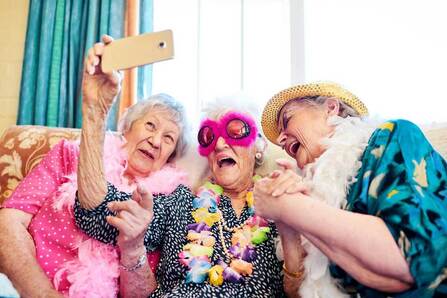 Stay Connected to Enjoy Life & Avoid Isolation Stay Connected to Enjoy Life & Avoid Isolation Suggestions, remarks, questions, praises, accolades and appreciations are never bestowed on people as they grow old. Those men and women who were once considered to be the smartest of the lot, who were approached for suggestions or those whose ideologies were followed word-to-word are isolated and sympathized as they grow old. Neglecting people owing to their old age has become our second nature. There are some who do it knowingly and many others who do it unknowingly. We are ready to pounce upon their inheritance and their rich experience when we need help but not so ready to give a helping hand when they need someone to share their thoughts and be loved. Such social isolation, physical illnesses, functional decline and vulnerability are making more and more people think about committing suicide. There is a constant concern about rise in the risk of chronic health problems affecting the elderly population and their vulnerability to immune-related health issues. But what we don’t realize is that suicide is one of the top reasons for death in the elderly population. Its ratio has multiplied such that rational suicide and assisted suicide has been approved in certain parts of the world. It has become one of the pressing public health problems, especially among the male population whose rates are quite high comparatively. A man’s confidence lies in his ability to earn money and take care of his family. Once he retires and family members become adults who start leading a family of their own, he starts losing his confidence and there is a greater slide in his spirits and energy if it involves the loss of a spouse. Whereas, women though might not be called the head of the family play an integral role in keeping the family united and are sought after by their kids well until later years. Her ability to cook, take care of grandchildren, give valuable suggestions on family issues and keeping the house a home helps her hold better authority and feel useful of her existence compared to a man. But as years progress and her health takes a detour, she does start feeling isolated even more when her kids and grandkids stay far away. Suicide: Surviving the Quicksand We may come up with different reasons to quote for the suicide of an elderly adult but one of the most prevalent causes is loneliness. Many elders live alone and such a life, especially after the death of a spouse can hurt them beyond words and they struggle to overcome such a tremendous loss but without success. This sets the foundation for mental health problems such as depression and grief. Family members and friends regard this grief and depression as a part of the elderly person’s routine aging procedure and they ignore it mostly. Besides, many others also fear the risk of becoming a burden, get socially disconnected and also fear that they would lose their ability to function in daily life all of which adds on to the mental illness. Also, 3/4th of adults live with a chronic disease most probably diabetes or arthritis and many start losing their ability to do their daily routine on their own, start depending on others for small tasks and even lose the ability to read, hear or drive properly-all of which are the essence of a happy existence bringing meaning to life. Some even succumb to memory-related issues and start realizing that they might be affected with Alzheimer’s or some other dementia in the future. All these makes them decide to end their life. Suicide is not an act that happens after careful thinking but something that happens on impulsivity. Seeing someone suffer from Alzheimer’s during the last years of their life or terminal cancer can motivate other elderly people to self-end their lives while they are hale and healthy. Having someone with terminal cancer? Better to educate yourself on the multiple ways in which you can make their lives easier by visiting www.firsteatright.com. Satisfaction and contentment in life becomes smaller and smaller as burdens start getting bigger and the time might come when you feel that it’s the right juncture in life to terminate your presence in this world. Social media and interaction among people have prompted more and more elderly people to try to end their lives when they are maximum happy in their old age. I once met a 75-year-old husband and his 72-year-old wife who wished to end their life when they were happy and were planning to travel to a country where assisted suicide is ethical. This might seem depressing to hear and read but remains as the fact of life. This also brings us to yet another important ideology that if this remains in practice the time is not far away when desires become regulations; rules might be established where people above so-and-so age are obliged to die willingly and children willingly take their parents to the death bed where physicians can end the lives of their dear mom and dad. Aren’t we reminded of the great writer Sujatha who has established this storyline in one of his fictional books decades back? When we see our parents, grandparents or any elderly person talking about being a burden to others or seeming to be uninterested in life it is our duty to help them become cheerful, lighten their mood and help them overcome concerns. Build close-knitted relationships with seniors, help them stay connected with each other maybe through groups or communities and treat them as an integral part of your life. With constant human care, psychological well-being, medical attention, physical health and exercise it is possible to improve their mental health and bring in positivity. Please don’t lose the love and affection of elderly people in struggling to lead your life with ample commitments and economic crunches. It is the people around us who help hold us together in times of distress and low ebbs. It does take time to sit with a person, share your day’s experiences and make them laugh but its worth every second spent. Suicide is not the answer to all the worries and setbacks in life. Cherish the presence of old people and make them feel valued by your gestures.  How About Choosing a Chocolate-layered Lavender Mousse Cake? How About Choosing a Chocolate-layered Lavender Mousse Cake? Flowers are a colorful treat to the eye and one of nature’s best revelations. This bloom/blossom is the reproductive structure of the flowering plant enabling the joining of the sperm with eggs and also attracts animals that help in the transfer of pollen. They are quite an asset to the plant and beyond that, a greater asset to mankind as well. None can stay blind to the beauty of these colorful blooms that are sometimes made into a bouquet, used for decorations and also considered as objects of romance, religion, medicine and even as a food ingredient. Yes! edible flowers are becoming popular and this is growing to be a booming industry. A bouquet is a sign of love and can be an ideal choice for any occasion right from birthdays and weddings to hospital visits and send offs. Its not unlikely to see a colorful bouquet of flowers sitting quietly in one corner of a patient’s room in the hospital. Beyond adding an aura of cheer and beauty to the room its also been researched that flowers improve wellbeing and the patients tend to require less pain medications after surgery, felt less tired, stressed and anxious and had a positive mental state than those in a room without flowers. Maybe, next time when we feel low and dull its not wrong to gift ourselves a bouquet of these unmatched beauties or place a bunch of roses in a glass vase anywhere-in our homes, at office or even in our kitchen. Even better, if we have a small vase in every room of our sweet homes with colorful flowers to brighten our mood and lighten our mental pressures. Doesn’t it seem fair now that most of the restaurants have a small vase with flowers in each of their tables (just to lit up the mood of their customers), hospitals and hotels have a big bouquet of flower at the reception desk that’s changed every morning and most offices too prefer to welcome clients with colorful flowers sitting at the admin desk? Apart from being a treat to the eye flowers are also great aromatic materials that are preferably used in preparing perfumes, air fresheners and potpourris to clear the air and enrich our surrounding. Some of the indoor plants help in purifying air helping us breathe fresh oxygen. Getting to smell a bunch of lavenders or roses before a major presentation or an exam clears your brain and also relieves your anxiety. Edible Flowers Don’t worry! There is nothing wrong in eating a rose petal, drinking hibiscus tea or adding lavenders to salads. We have grown up eating rainbow-colored fruits and vegetables to add nutrients and health to our body and we are now presented with an opportunity to treat our taste buds with colorful edible flowers that add color, sparkle and health to our well-being. Not long ago, my mom used to dry rose petals, eat one or two of them while doing it, use them as tea essence and even add them to milk before serving us. She was questioned, branded and her methods doubted as there were none in the family who seconded her deeds. But now, the same has become appreciable and encouraged. We pay 200 bucks for a small glass of green chamomile tea, saffron milk or rose-infused milkshake. That’s primarily because research and studies have come up with an exhaustive list of benefits of flowers including their antioxidant and vitamin benefits. Social media sites such as Instagram and Pinterest have influenced people’s approach to many foods (https://www.theguardian.com/lifeandstyle/2017/jun/30/blooming-tasty-edible-flowers-are-summers-hottest-food-trend) and now, more and more individuals are concerned about the look and feel of their foods too! Fresh edible flowers are in great demand these days by foodies and health lovers as they add more flavor, power and color to foods. There are thousands of photos of foods posted on Instagram, programs such as MasterChef revolutionizing culinary tastes and experimental individuals figuring out ways to reinvent dishes making them more healthful and tastier. But not all flowers are edible, some are quite poisonous while some others can jeopardize your health. Its essential to learn to pick the right ones for your dinner plate. While supermarkets can help in this regard by stocking fresh packets of edible flowers for purchase its also good to get a first-hand experience on your own. Let’s take a look at each of the edible flowers that offer us with a bouquet of benefits: Hibiscus: A beauty that grows in many of our homes hibiscus contains antioxidants that’s proclaimed to help reduce bad cholesterol levels in the body, enhance good cholesterol levels and improve hair and skin health as well. Many drink hibiscus teas as a health enhancer while it is also possible to eat the flower straight off the plant. Sounds crazy but true! Lavender: The color and fragrance of lavender makes it an excellent choice for salads and teas. This purple-colored flower goes well with berries, thyme, sage and chocolate and can be eaten fresh or dried. Its said to be a good source of vitamin A and also helps in easing stress. Rose: This flower which is a sign of love and intimacy also holds a prime place in culinary. Aren’t we in love with gulab ice creams, rose milk and gulkand? Proclaimed for being a great source of vitamin A, C and E roses are also good sources of antioxidants that save the body from free radicals. Chinese medicine even used rose to treat menstrual disorders and digestive problems. But all said and done, adding fresh petals of rose to our salads does brighten our meal. Marigold: The sunshine flower has aplenty flavonoids that has the potential to prevent cancer. Caution is required while picking marigolds as some varieties are poisonous. Chamomile: Yes! Here comes our favorite chamomile that’s been universally used these days to prepare flavored chamomile tea. Even children love them! Like lavender, chamomile works well on your digestive system and helps in getting a good night’s sleep. Apart from these, jasmine is prominently used in India being added to rice preparations, teas and even jams. Banana flowers are a great source of health prepared as curries; papaya flowers are used in salads; dandelions, lotus stems, pansies, daisies, mint flower, sunflower, pumpkin blossom and rhododendron are used in Indian cooking. We are even proud of using Neem flowers for preparing dishes during festivals despite their bitter taste-the use of neem flower is an indication that life is a mix of sweetness and bitterness which must be accepted by each of us and it is also has digestive property. So, add a dash of these colorful blossoms to any of your dishes depending on your choice of foods and taste. But before that, ensure to speak with your physician as some plants interact with certain medications and you don’t want to land up in trouble. People with asthma (the pollen could ruin your day), pregnant or breastfeeding women and those with allergy-realted problems are recommended to stay away from edible flowers. References The Mental Health Benefits of Flowers: https://www.huffpost.com/entry/health-benefits-flowers_b_2992014 So Sweet, the Surprising Health Benefits of Flowers: https://share.upmc.com/2015/02/health-benefits-flowers/ How to Create your own Edible Flower Garden & Food to Eat: https://www.heraldscotland.com/life_style/16144605.how-to-create-your-own-edible-flower-garden-and-food-to-eat/ Removing Gluten from Kids Meals Fearing Celiac Disease Opens the Door for More Complications10/21/2019
Is your kid hungry? You have the simple solution of satisfying his/her hunger with a couple of bread slices spread with his/her favorite chocolate or cheese spread. Weekends are for delicious pasta and baked goods often seem to find a place in each kid’s snack box at least a couple of times a week. In short, our toddlers and young kids are eating lots of gluten-rich food right from younger years of life. I do accept the fact that the term ‘gluten’ was unheard of decades back but now most of us are familiar with it. Celiac disease has occupied a safe place in the list of diseases conquering many kids’ health. Bread is one of the oldest discoveries and we have been eating baked goods since centuries but why is there a sudden surge of interest in gluten-based foods and celiac disease in general? One, it might be due to an increase in awareness about the disease and two, it might be due to the increased consumption of gluten-based foods.
Looking Past the Genes Gluten is a protein found in common grains such as wheat, rye and barley and celiac disease is an immune reaction in the small intestine to gluten that can lead to serious complications. The problem usually starts during early childhood, individuals with a parent, child or sibling with the disease carry a 1-in-10 chance of developing the disorder and until now, we have been unable to understand why the disease affects only certain people at a risk for it sparing others who are equally at a risk for the health condition. If you or your beloved ones suffer from celiac disease or gluten insensitivity it is better to revise your diet routine with the help of a nutritionist/dietitian at www.firsteatright.com to avoid nutrient deficiencies later in life. There have been various studies trying to analyze why only few people suffer from the disease but the results have always been inconclusive. A new study published in the reputed journal JAMA shows that eating higher than normal levels of gluten during the first five years of life increases the child’s likelihood of developing celiac disease. The research followed more than 6,600 children (all of whom had inherited the risk of the disease) from birth up to 15 years of age at different clinical centers in Finland, Sweden and Untied States. The food consumption pattern of these children was monitored throughout the study and results showed that more than 18% of kids developed autoimmune responses to celiac disease and 7% developed celiac disease both of which peaked at 2-3 years of age. For every one-gram increase in gluten intake (which was only equal to half a slice of bread) at age 2 there was an increase in risk of celiac disease by age 3. It is indeed true that celiac rates have climbed the ladder-almost by more than 4 times in the United States and in Sweden and Europe too in a similar manner. We might blame the production process of breads, speak ill about the increase in intake of baked goods or simply comment that food products have become more refined enhancing disease risk. Though an increase in gluten-rich foods has often been linked with increase in celiac disease rates we don’t have trials supporting this evidence. But the study above shows that every one-gram increase in gluten intake increases the risk of disease by 20-27%. Almost 100% people with celiac disease possess one of the two genetic variants of a protein and the chances of getting the disease are almost zero in those who don’t have the gene. Ironically, more than 40% individuals in America, Europe and Southeast Asia contain the gene that increases their risk of celiac disease. Among these people, almost 40% of them manage to stay away from it. It is observed that while Finland is a country dominated by celiac disease cases there are other countries in Europe where wheat consumption is even more. Hence, this study cannot bring us to the conclusion that eating too much gluten increases the risk of celiac disease and there are almost 50% people in many countries who possess a copy of the gene that cause the problem with/without increased gluten intake. All these clearly point one thing clearly-never limit or cut off gluten intake from your kid’s meal as this can lead to serious nutrient losses unnecessarily. But, if you do have a family history of the disease it is always better to stay cautious and keep checking every once a while for any signs of it. A type of cancer that’s monopolized by men, prostate cancer might even go unnoticed in some individuals who die due to other causes such as heart attack or stroke. Prostate is a walnut-shaped gland found only in men that makes fluid that’s part of the semen. Situated below the bladder in front of the rectum, the size of the gland changes with age becoming larger as a person grows old. Prostate cancer, one of the most common forms of cancer in men, is one that occurs in the prostate gland. The cancer normally spreads very slowly and in some cases might need minimum or no treatment at all but other times certain types of the cancer are more aggressive and can spread quickly. While going in for radiation and chemotherapy immediately is not required in the case of all men diagnosed with prostate cancer there are multiple factors to consider such as age, health and side effects of the treatment such as incontinence and erectile dysfunction before choosing any treatment.
Treating Prostate Cancer Mostly men choose testosterone-blocking drugs as a common treatment option and this so-called androgen deprivation therapy (ADT) has been linked with an increase in cardiovascular disease in men. Prostate cancer needs the presence of testosterone to grow and survive and with the help of ADT it is possible to bring down testosterone levels close to zero in the human body thereby preventing the survival of the cancer. Though ADT is usually recommended for treating patients with advance-stage prostate cancer there are many cases of ADT being used to treat localized prostate cancer too. ADT is usually used alongside radiation therapy in those men whose prostate cancer risks are too high without which their survival rates are also affected. ADT is often rejected unless and until the patient desperately requires the treatment procedure as it has the potential to cause harmful side effects such as erectile dysfunction, bone loss, diabetes and swollen breast tissue. While these are bad there is no harm to the life of the surviving person but now, we have data showing that reduced testosterone levels can increase the risk of cardiovascular disease (CVD) which is highly disturbing! But we have had conflicting results until now as there are studies that show/don’t show a link between ADT and CVD risk. A study published in the journal British Journal of Cancer included more than 7000 men who were diagnosed with localized prostate cancer of which a third of them received ADT treatment. After a follow-up of 13 long years men who were given ADT and without any heart disease saw an 81% increase in their risk of heart failure. Men who already had CVD witnessed a 44% increase in the risk of arrhythmia. Learn more about arrhythmia and how its risk can be minimized with effective lifestyle changes by visiting the website www.firsteatright.com. Researchers found that decreased testosterone levels had a greater impact in increasing the risk of CVD in more than one way-fat mass increased which is a huge risk factor for CVD, there are higher chances of abnormal lipid profiles, pro-inflammatory chances and hypertension, all of which increase the risk of CVD. If you are one of those men who already had a heart attack and planning to undergo ADT plus radiation treatment for prostate cancer you are digging your own grave as the chances of a heart attack is overboard and its effect are close to fatal. A group of 206 men with unfavorable-risk prostate cancer received treatment in the form of radiation alone or radiation and six months of ADT. These men were categorized into various subgroups based on their health conditions such as heart disease. After a follow-up of 16 years researchers found that in the subgroup that had a previous heart attack administering these individuals with ADT plus radiation reduced their 15-year survival rate to 8% compared to 20% for those who were treated with radiation alone. If these are not more than enough reasons to skip ADT plus radiation as the treatment protocol for prostate cancer, a study published recently in the American Heart Association’s journal Circulation shows how the testosterone-lowering drugs affect the heart’s QT interval-the time taken by the ventricles of the heart to contract and relax (QT interval is long when heart rate is slow and short when heart rate is fast). Longer a QT interval greater are the risks for the individual to develop serious heart rhythm problems and also a condition called torsade de pointes that can lead to sudden death. When a group of researchers sorted through a global health database looking for any link between men with long QT, torsade de pointes or sudden death with testosterone-blocking therapy they found that 7 of the 10 drugs were indeed linked to such disastrous effects. They came to the conclusion that when any patient is prescribed with antiandrogen drugs it is the responsibility of the physician to monitor for torsade de pointes and also monitor for other risk factors as well. Before suggesting any treatment procedure relating to testosterone blockage the physician must inform the patient of the potential side effects such as heart failure risk and also help them with providing cardiovascular examination once the patient chooses to go with ADT. 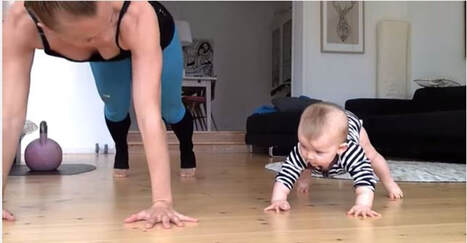 Bring On the Energy Little Boy! We are Off to a Great Start Bring On the Energy Little Boy! We are Off to a Great Start My 4-year-old girl has perfected the cat posture, butterfly posture and even the ironman workout which makes me feel proud as a mother! For those who find these terms to be Greek and Latin maybe you are far behind in the race to exercise for good health and you need to pay attention immediately! There is no denial that parents are a child’s first role model and I take pride in telling that I am the role model for my child when it comes to exercise and health. Read more about how parent’s influence their child’s development and personality by visiting the website www.firsteatright.com. Children spend time in structured and unstructured play time reaping different benefits from each. I, as a parent, spend time with my little one playing with blocks, board games, helping her draw/paint and above all, doing exercise together. It all started with my efforts to lose post-pregnancy weight where I had no choice but to exercise with my little one around in the house. Maybe, it was her exposure to physical activity at such a tender age and my regular practice that motivated her to indulge in physical activity day in and day out apart from playing with kids in the playground. Now, I am indeed even happier when I read somewhere that physical activity in early childhood has an impact on cardiovascular health later in life according to a new study. Helping Tiny Tots to Move & Groove to Exercise Beats The study, published in the Pediatrics journal involved more than 400 kids aged between three and five for a period of three years who were monitored for key markers of heart health including arterial stiffness, cardiovascular fitness and blood pressure. Cardiovascular fitness was measured by noting how long the kids could survive the treadmill test and how fast their heart rates recovered after exercise; arterial stiffness was measured by observing how fast the pulse traveled through the body and researchers used ultrasound imaging to measure stiffness of the carotid artery; and blood pressure measurements were also noted. Physical activity was measured by making these kids wear accelerometers for a week around their waist which enabled the researchers to measure the amount and intensity of activity every day. While it is a general misconception that cardiovascular disease is only monopolized by the old it is essential to know that arteries begin to stiffen when we are young. This research proved that while arterial stiffness is inevitable the process is actually slower in those kids who are more active. It was also these kids who displayed more endurance on the treadmill test and had their heart rates come down more faster showing that they had improved cardiovascular fitness. Hence, vigorous activity was more beneficial for heart health. While the results were same for both boys and girls involved in the study, the research showed that physical activity had a positive effect on blood pressure in the case of girl children only. The study also proves that intensity of activity does matter indeed in reaping the benefits of your hard work! Kids who play hard panting and going out of breath benefit the most. There is no rule that all the physical activity happens at one shot in these young tots. It can be dispersed throughout the day helping them stay active. While the study only emphasizes the fact that physical activity benefits cardiovascular health it does promote and insist that it can have protective effects right from a very early age. But it still is a mystery whether these advantages carry forward into the kid’s life as adolescents and adults too! We all feel proud when someone says the kid resembles the mother’s features or the father’s personality. Let’s start to live a lifestyle such that we feel proud of nurturing our children with the benefits of good health, well-being and happiness that we can feel proud about anytime in life.  A Passion for Art Makes Dementia Compassionate Towards the Individual A Passion for Art Makes Dementia Compassionate Towards the Individual As kids, we were proud of our stamp collections, drawing, paintings or music skills that we would put it on display every time someone comes to our homes. Apart from studies and school almost most of us were enrolled in some hobby class which would mostly be our mother’s choice! Singing, chess, drawing, dance or some sport were the major picks for a hobby class a decade back. Though the trend continues until now we do have newer ones such as skating, abacus, foreign languages and more to put us in a whirlwind of confusion ultimately. What started as a hobby for some becomes their primary profession too later in life! It is during these times that we thank our parents who were once branded as being dictators torturing us and taking away our independence! More than being a pastime and an art form do you know that engaging in a hobby daily helps in the long term in postponing/reducing the risk of dementia? Its not only arts and crafts but even a movie with friends, concerts, travel, book clubs, surfing the net, playing games and even online shopping that helps but at a closer look it is seen that arts-related hobbies ensure maximum benefits! Our schools focus on core subjects but also make one or two languages compulsory apart from the medium of communication based on the board of the school. Regional languages are compulsory second languages in most schools while the third language becomes one of our choice. But once out of school language disappears from our curriculum as we are stuck up with our core subjects! Still, arts degrees offer a second language even during college years. Also, there are some who are passionate about learning new languages and go to the extent of learning even three or four of them. Today, it’s become a fashion or even a passion to learn languages such as French, German or Russian as they provide excellent job opportunities within and outside the country. Besides these benefits, we have studies showing that learning a second language and being multilingual improves cognitive skills and delays the onset of dementia. The onset of certain types of dementia is delayed by as much as five years for bilingual people as they have a cognitive reserve that delays the onset. Language must be a part of the curriculum from the child’s fifth year until he/she completes college. Studies show that bilingual children who use their second language skills regularly are better at prioritizing tasks and multitasking compared to monolingual children (https://www.theguardian.com/science/2011/feb/18/bilingual-alzheimers-brain-power-multitasking). The executive control system is a critical area of the brain and though this deteriorates with ageing its been found that being bilingual keeps the person functioning better at every stage of life as it boosts brain performance. There is a constant stimulation in the brain which helps in building a cognitive reserve and this exists as a major reason for delaying onset of dementia. Earlier, parents were always suggested to speak in one language to their kids as this would minimize confusion and allow them to master the language before moving on to another one. Even doctors suggested the same while nurturing small kids. It was believed that learning multiple languages confuses the brain and they face difficulties mastering either completely. But now we have found that multilingualism is not only better for improved brain performance but also stalls dementia onset. Bilinguals outperform monolinguals in selective attention, multitasking, processing new instructions and following them and performing concept-formation tasks. But they do also take time to retrieve words from memory. If you ponder, the world has got a greater number of bilinguals than monolinguals which shows that most of us are at a decreased risk of dementia. While we know that the risk is low, we still can’t answer the question of ‘why’. Being socially active or outspoken too helps in lowering the risk of dementia-while this has been insisted upon, we do not have definite results supporting it. But those who spend time speaking to others and lead active social lives are healthier than those staying locked up inside the house. So, we don’t know whether being socially active prevents dementia or those who don’t have dementia are more socially active. Embrace brain-stimulating activities and hobbies to delay/prevent dementia risks. We do have artists, multilinguals and actors who are down with dementia despite study results showing such benefits. But the trick here is that engaging in such activities does invoke pleasure in your mind, keeps you busy and helps you stay happy. Who knows, maybe these people have better quality of life with dementia compared to rest or are struck by this illness only during later years of life. earning a language is never going to be a waste-learn it! Doing pottery or craft is never going to decay-do it! Being socially active is never going to spoil your mood-be active! References Students Should Learn Second Language to Prevent Dementia in Later Life: https://www.telegraph.co.uk/news/science/science-news/12156709/Students-should-learn-second-language-to-prevent-dementia-in-later-life.html Can Learning a Foreign Language Prevent Dementia: https://time.com/5629779/learning-language-dementia/ Which Hobbies Help an Ageing Brain? https://www.cbsnews.com/news/which-hobbies-help-an-aging-brain/ Hitting the gym to get fit maybe an outdated practice as many individuals are now in love with the sauna to become fitter and grow healthy. Sweating has been the golden rule since olden days believed to shower good health and used for religious ceremonies too. Many countries have their own way of using heat for relaxation and saunas have been in practice for over thousands of years in Finland. Basically, a Finnish sauna is extremely dry, humidity is low and the dry heat generated by the temperature control has profound effects on the human body. The individual sitting inside the sauna room starts to sweat almost immediately after the session starts, skin temperature soars to about 104˚ in a few minutes. Body temperature too rises (but slowly) but it’s the heart’s response to heat that’s more important. Pulse rate increases by 30% and the amount of blood pumped by the heart almost doubles every minute. Most of the excess blood pumped is directed at the skin and away from the internal organs and everything together causes a rise and fall in blood pressure. Earlier it was believed that sauna sessions cause a fall in BP levels and people with heart problems or BP issues are advised against sauna sessions as much further dips in blood pressure can result in fainting.
One thing that’s important is to understand the difference between the acute effects of a sauna session and the effects that are visible during the rest period after the sauna session. One group of scientists decided to note the immediate effects of sauna use on the cardiovascular system. 19 participants were recruited for the study and all of them were exposed to 25 minutes of sauna session while having their blood pressure and heart rate checked. BP and heart rate rose immediately during the sauna visit and dropped below baseline levels that were seen before the start of the sauna session. The same participants were also requested to undertake a short exercise program on an exercise bike during which each of their blood pressure and heart rates were measured. Comparing the numbers, the researchers found that the participants’ blood pressure and heart rate levels measured during exercising were almost same to the measurements that were noted down during the sauna session. This made them conclude that sauna sessions did pose a burden to the body of an individual. Hence, saunas can be used by those who can tolerate certain amount of stress without feeling much discomfort and those with blood pressure must be cautious as their blood pressure levels might drop further below the levels that were seen before getting into the sauna. We do have previous studies showing that sauna sessions do have effective benefits over the body in the form of lower blood pressure, decreased risk of heart disease and better well-being which are all assumed to be due to the increase in blood flow and heart rate that happens during the session. Sauna is indeed physical strain over the body and the sweating too is heavy. But if you think that sitting inside a sauna is going to help you lose weight please don’t come to hasty conclusions. The sweating is healthy but it’s not good enough for weight loss as there is no muscle activity. In fact, it is advisable to rehydrate after a sauna session to replenish lost liquid stores of your body. For more details about sauna, its pros and cons, who can use it, who are the people advised to avoid it and ultimately, what would be the effect on those undergoing the session please visit www.firsteatright.com. While positive effects are indeed true it is always better to consult a physician before hitting the sauna to ensure that it’s alright for your body to experience the high temperature and the dryness that goes with the session. Also, nothing can substitute the benefits of exercising. Don’t forego physical activity to involve yourself in a sauna tub but only take it alongside exercise to reap benefits. Enjoy your work and the office becomes a heavenly abode. Despise your office job and there is no room for enjoyment but only a buildup of stress that takes a toll on your mental and physical well-being. Employees look forward to getting help from their employers to deal with stressful situations-be it meeting deadlines, dealing with resentment from subordinates or other such issues. But a new report comes with one of the most disappointing facts that most workplaces don’t offer programs that help employees come out of the workplace stress. The study mainly focused on resilience programs at work.
Stress is a Trigger Factor for Unhealthy Indulgence People are not themselves in times of stress and resort to several unusual behaviors to get out of the stressful situation. It might be smoking, drinking excessive alcohol or even binge eating to forget about their worries and go on with life. What they don’t realize is that such irrational behavior can land them in greater troubles increasing the risk of stroke, heart disease and other health problems. Despite controlling factors such as obesity and smoking stress has proved to be a great trigger for heart attack. The study analyzed that employees benefited greatly when resilience programs were offered by their employers. Such programs improved their health and overall satisfaction of the employee too. Another study showed that several employees felt their job to be the main hindrance for good health and some felt that they felt stressed constantly due to their job profiles. One reason for several employees quoting stress at work is due to the growing demands of companies in terms of quality and quantity of work. Many organizations cut down workforce as a result of cost cutting and burden the few employees with more work which automatically shoots up the employees’ stress levels. This is especially true in the case of youngsters who spend most of their time at work burdened with the responsibility of growing up and reaching a good position in life. Millennials are the affected lot as they wish to balance their work and family life equally not ready to forgo either. Resistance training is the best solution for improving an employee’s mental and physical health which in turn help to improve performance at work. How people feel about their health plays a critical role in determining success of their output at work and elsewhere too. When an employee is happy and healthy, he/she is motivated to work and bring about outputs but when the same is unwell both mentally and physically the chances of reaping greater benefits at work is minimal. So, apart from delegating work and seeing to compensation benefits it’s an employer’s equal responsibility to keep his/her employees free of stress and take steps to ensure that they enjoy working for the company. Meditation and yoga are great ways to reduce stress but there are quite a few other innovative ways explained at www.firsteatright.com in which individuals can minimize in normal scenarios when the pregnant lady is healthy without complications. Most of the deliveries previously were of this kind and a Cesarean section delivery was almost unheard of. But nowadays, women suffer from every other complication during her pregnancy tenure and physicians are pressurized to take utmost precaution to deliver a healthy baby and enable the survival of a healthy mom.
Being overdue (absence of labor beyond 42 weeks of pregnancy) poses dangerous consequences to the baby comparatively and might require the intervention of a C section. When there are no such complications it is hard to determine when the mom-baby duo have crossed their pregnancy deadline, but physicians do induce labor after a designated period to avoid any problems. This induction of labor has to be precise and beneficial for the mother and the baby outnumbering the risks involved in inducing labor. When Pain is Blissful Humans fear pain and try to stay away from any mental/physical pain as much as possible generally. The only situation in which humans wish to have pain is during labor without which a quick delivery is not possible. When natural labor pain doesn’t set within the safe pregnancy tenure, physicians go about inducing pain. There have been conflicting opinions and insights into such artificially induced labor pain. Amongst all this controversy a new study has come up with the fact that inducing labor after full term (39 weeks) when natural labor doesn’t set by then does not enhance health risk of the newborn baby. There are many unanswered questions enveloped in our minds regarding pregnancy and childbirth but if one remembers that every act of nature has solid logical reasoning behind its existence we would surely lead happier, satisfied and more peaceful lives. One such grand act of nature is the pregnancy tenure of 39 weeks that’s been pre-decided for every conceiving woman. Science suggests that the developing fetus ought to reside inside the womb for a full 39 weeks to ensure complete development of the baby. Lungs and liver develop until the very end of pregnancy and the baby’s brain too almost doubles in size during the last few weeks of pregnancy. Once the baby is ready to come out, labor pain sets in. Only when this doesn’t happen we think of all other artificial methods of inducing labor and delivering the baby. Inducing Pain Conducive for Delivery Earlier research showed that inducing labor pain (reasons might be due to medical conditions, completion of full-term or due to requisition of the pregnant mother) before 39 weeks of pregnancy carries serious health consequences along with it. This sparked researchers’ curiosity which made them question whether inducing labor at full term also puts the baby at a grave health risk and increases the chances of a C-section delivery. More than 6,000 first-time moms-to-be were engaged in the study that wanted to know the results of inducing labor at 39 weeks of pregnancy. Physicians have generally avoided this process as it has been believed that such artificially induction of pain paved way for Caesarian delivery. Women who deliver once by C-section are likelier to deliver babies this way which further ups the complications risk. Participants were assigned into two groups randomly where one group waited for natural labor and the other group were induced at 39 weeks. Study results showed that inducing labor curbed the need for a C-section for every 28 deliveries (rates dropped from 22% to 19%) and those women who chose to induce labor at 39 weeks delivered nearly one week earlier than women who chose to wait for natural labor. The two groups of babies displayed similar survival rates and were also at the same risk for health problems. This study clearly proves that inducing labor at 39 weeks is as safe as natural labor and even carries with it a couple of other advantages as well-these women were at a reduced risk of preeclampsia and newborn babies were less likely to suffer from respiratory distress. Know more about preeclampsia and its severe impact on the pregnant mother from the website www.firsteatright.com. These positive results remained the same across the study population irrespective of the woman’s age, ethnicity and BMI value. But this does not bring us anywhere close to the conclusion that inducing labor should be the routine way for delivery. This can be considered a vital option after discussing with the physician and chosen based on the pros and cons involved.  Depressed Moms Live in their Own World Ignoring Her Child’s Needs Depressed Moms Live in their Own World Ignoring Her Child’s Needs Every child deserves to be in the warmth of a mother who smiles and every mom deserves to be happy around her child and family. Sadly, this is not the case that’s happening in some of our homes and women have a one in five chance of experiencing depression at some point in their life. Such high risks are due to the mother’s daily routine that might include experiencing stress cropping up from family issues, being isolated from friends due to overpowering family commitments, taking care of a child or an elderly with chronic health condition or being in an abusive relationship. Women are the fulcrum of a family and she takes 100% responsibility for the well-being of family members sacrificing her own happiness and health. But this does not go well with her in the long term and she becomes a victim to depression at some point in life. Depression after childbirth is commonly witnessed as the new mom is engaged most of the time with the baby unable to spend time for herself. This manifests in various forms creating a negative impact on her social and cognitive development and also hinders her ability to connect with her baby. Beyond that too, depression that prolongs in a woman’s life not only affects her but also hampers the well-being of the child greatly and most parents don’t realize this! Mother’s Depression Affects the Child’s Overall Development A child is at his/her best behavior in front of strangers and worst behavior to his/her mom as the kid feels most secure in the presence of his/her mother. Moms have the greatest impact on children and determine the way in which these kids grow. To ensure the healthy growth of a child the mother should be healthy and in the right frame of mind to take good care of her kids. While the family circumstance and the surrounding do have a long-lasting impact on the child’s thinking and growth the mom’s upbringing has the potential to destruct them all. But when mothers are depressed themselves it drastically affects the way in which she takes care of her kids and also impacts the child’s performance at school, causes increased hospital visits, poorer interaction with peers and also might lead to adolescent depression. Mothers with depression are inclined more towards negative parenting criticizing the child often which in turn leads to social withdrawal from the child’s side. The sad thing here is that most parental depressions go unnoticed without medical attention. A recent study shows that even mild long-term depressive symptoms in mothers are connected with emotional problems in kids such as hyperactivity, aggressiveness and anxiety. This study looked into depressive symptoms present in both moms and dads and its presence affect kids by the age of 2 and 5. Antenatal and postnatal depression affects both the well-being of the mother and her newborn child. Read more on postnatal depression and its effects by visiting the website www.firsteatright.com. While a father’s depression affects the child’s emotions only when the mother is depressed as well, a mother’s depression as a standalone is good enough to affect the child’s well-being. Though mild, long-term depression is an indication that depression could have been experienced sometime even before pregnancy and when this turns out to be positive it becomes a serious risk factor for severe depression in the long run. When either parent suffers from depression then the other parent must also be examined for the same. Symptoms of depression include prolonged sadness, low energy levels, instant crying, feeling inadequate and hopeless, sleeplessness and change in appetite. Mothers should start paying attention to their own problems failing which they are at the highest risk of succumbing to depression. Bad family environment, stress, pregnancy, anxiety and sleep deprivation are risk factors that can push a person into depression. This in turn affects the child’s quality of life. In short, keep moms healthy, peaceful and happy as they are filled with the potential to keep their children happy and well. 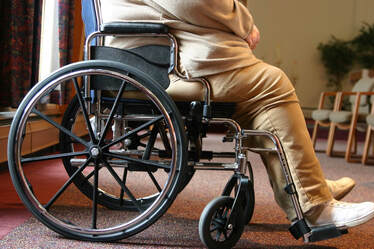 The Type of your Disability can Restrict Physical Activity Greatly The Type of your Disability can Restrict Physical Activity Greatly Every soul living in this world suffers from some disability during his/her life which hinders the person’s growth temporarily or rarely, permanently. It might be a fractured leg that prevents the person from walking for some time or it might be loss of vision since birth which is a permanent disability. Impairments or disability prevent people from performing their day-to-day actions with ease and many even need the help of another person for this. In between all this comes the ill effects of obesity on disabled people. Obesity is a worldwide epidemic which countries around the globe are concerned about. This epidemic has affected the health quality of individuals and deteriorated their quality of life greatly. Increased weight is more problematic for people with disabilities than the common man. Research shows that such people are likelier to become obese compared to the rest of the population (due to very low activity levels) but still not much efforts have been taken to curb this. A Life Sautéed & Cooked with Problems at Every Stage In general, people with disabilities face problems in eating healthy food, exercising and controlling their weight due to:
People with intellectual obesity are likelier to be obese comparatively due to a combination of behavioral, environmental and biological factors. Genetic diseases such as Prader-Willi syndrome and Down’s syndrome increase the risk of obesity greatly and also use of medications relating to such diseases cause weight gain. Research shows that people with emotional, physical and sensory disabilities are at a greater risk of overweight/obesity compared to the general population. When its difficult for the normal individual to diet, exercise and lose weight there are no second opinions that weight loss is a tough journey for the disabled population. Some ways in which the obese disabled individual can be helped in his/her journey of weight loss include:
Have you had your five servings of fruits and vegetables for the day? If the number five seems intriguing you are far away from being anywhere near to health and nutrition as health experts’ first recommendation would be to include five servings of rainbow-colored produce in your daily diet. Those of you whose answer is yes can simply congratulate yourself but just wait before you gloat on your efforts as I have another question which might sound silly but is rather necessary to affirm health. Did you consume five different whole fruits and vegetables or did you try to be over smart, add all the five fruits in a blender and drink it up as a fruit juice or smoothie? If your answer is yes to the juice/smoothie part please revisit your daily routine as this juice doesn’t fulfill fruit consumption requirements and is still considered as consuming only 1 portion for the day! Fruits are full of vitamins and nutrients; they are a boon to all of us fulfilling out sweet tooth and taste buds unlike vegetables that are rather bland and tasteless but does their health benefits depend on how they are consumed?
Apples, bananas and oranges are common fruits that hold a place in most of our kitchens while berries, peaches, pears and kiwis belong to the exotic category that cannot be afforded by all. It is always recommended to eat seasonal fruits as they are fresh, enriched with nutrients and affordable too. Marketing gimmicks and business strategies have suppressed the goodness of our regular fruits such as apples, pomegranates and grape while promoting and favoring fruits such as berries, kiwis and cherries. A fruit is a fruit and each of it is uniquely nutritious. While mangoes, jackfruits and bananas are touted to be full of calories and enemies to diabetic patients it is important to realize that these fruits are neither foes of diabetes nor are other fruits their friends. Even the goodness of fruits depends on how they are consumed-as a whole fruit, fruit juice, smoothie or jams. While we know that jams are not healthy despite containing fruits, we treat fruit juices and smoothies to be extremely healthy versions of the produce. But how good are they really in providing the desired health benefits? Our Ancestral Roots Go Back to Fruits While we do have studies showing that our ancestral diet was dominated by fruits based on the evolution of human jaws and teeth we don’t have much supporting data to strongly support or condemn the consumption of a fruit-dominated diet. Like vegetarians and vegans there are a sect of people who are fruitarians but adhering to only a fruitarian diet puts one at utmost risk for nutritional deficiencies and creates problems in people with diabetes, certain medical conditions and in small children too. The reason why fruits have always seen ups and downs with diabetes patients is due to the presence of natural sugars in them. No rule says that fruits should be avoided by diabetes patients or sapodilla is bad for their health. All that we need to ensure is that the portion sizes are controlled and they fall well within their daily intake calorie limits proposed. Again, these people are advised to take it in the form of whole fruit rather than fruit juice as whole fruit has a whole bunch of advantages that mitigates sugar-driven health risks (https://time.com/5301984/can-you-eat-too-much-fruit/). That’s because, whole fruits are rich in fiber (Soluble and insoluble) and sugar absorption is not profuse as in the case of juices. Whereas, intake of fruit juice has been linked with an increased risk of diabetes. Whole fruits are healthy but excess consumption can lead to problems such as diarrhea. Our people are fixed on the notion that anything that contains fruits is healthy irrespective of the other ingredients present. Fruit juices contain fruits, sugar and cream (sometimes) mixed in a blender and served. Children often prefer juices over whole fruits as they are spared of the need to bite, chew and eat the fruit. Secondly, the excess sugar present makes the juice yummier and tastier but the sugars are also directly absorbed by the body increase blood glucose levels. A survey regarding fruits juices brought in shocking results as almost 75% of the survey participants believed that fruit juices and smoothies were healthy and only a quarter of the total participants were concerned about the presence of sugar in these drinks. Smoothies are creamier and richer sometimes based on the ingredients used for preparation. A smoothie basically contains pureed raw fruits, vegetables and dairy products such as yogurt, ice cream and cheese along with other ingredients such as water, nuts, seeds, sweeteners and nutritional supplements. Mankind loves innovations and new things and smoothies are the latest in trend. There are hundred different varieties of smoothies some of them are proclaimed to be breakfast replacements and others are consumed before/after workouts as a source of energy replenishments. They are similar to milkshakes with the primary difference being that milkshakes contain more ice creams/yogurt and less fruits. Drinking a smoothie might seem the right thing to do but the ones offered at cafes and juice shops are loaded with calories and the portion sizes too are enormous! Its better to split your smoothie with your besties rather than drinking up all the calories. It is also essential to know that smoothies can be good when they contain the right mix of ingredients in the right proportion. Get your fruits, veggies, fat and protein portions right and you indeed have a healthy snack in hand. Include fruits, veggies such as kale or spinach for fiber and vitamins, proteins in the form of chia, unsweetened nut butter, hemp and chia, and fats such as sugar-free nut butter, flax oil or unsweetened yogurt. You can even throw in spices such as turmeric, ginger, cinnamon and nutmeg, herbs such as cilantro or even some spirulina to make it packed with nutritive value. This makes a smoothie healthier (antioxidants and anti-inflammatory benefits) than a fruit juice but sugar levels are bound to rise immediately as in a fruit drink. Proclaiming smoothies to be the magic drink for weight loss is all humbug. Nothing can beat the benefits of exercising regularly and eating a nutritious diet. Though we do have various options to consume fruits eating them raw is in the best interest of our health as we are equipping our body with nutrients. Occasionally enjoying a fruit juice or a smoothie is not going to cause any harm. Do enjoy the drink during a party or while hanging out. But take care not to overstep your total calories too. References Are Smoothies Healthy? https://time.com/5447846/are-smoothies-healthy/ How Fruit Juice Went From Health Food to Junk Food: https://www.theguardian.com/lifeandstyle/2014/jan/17/how-fruit-juice-health-food-junk-food Ask yourself this secret question that each of us never let others find out the answer to: “How old am I?” The question sounds silly and straightforward to ask yourself but the response determines your survival capacity. Probing into one’s age is never liked by the female gender whose worst fears are those comments that tag them as ‘aged’ or ‘beyond the youthful stage’. As I have discussed earlier too, age is just a number and chronological age is simply for the records and for official birthday parties. Its your physiological age (a measure of how well your body is functioning relative to your age based on various factors such as diet, lifestyle and exercise) that plays a primary role in deciding your quality of life on this Earth.
Ageing without Foraging for Staying Young Forever None can predict death but one can always list down his/her risk of death depending on his/her age. Even the most ignorant person is well-aware of the fact that greater the age greater is the risk of dying. If someone wants to predict their lifespan more precisely physiological age is the go-to factor that exists as a better predictor. The physiological age of youngsters and middle-aged people these days are becoming worse than those belonging to yesteryears-these populations complain of different aches and pains right from knee and joints to shoulder and neck. They feel tired frequently and lack the energy to foray into different things simultaneously. Their body doesn’t permit them to work, clean the household and cook simultaneously. Neither do they have time to exercise. Appointing cooks, buying food from outside and sending kids to tuition remains the top-priority choices. Such lack of activity and an inactive lifestyle plays a toll on the person’s health increasing his/her physiological age though the chronological age might be lower than it. Researchers have come up with a formula to calculate physiological age/their exercising intensity called as A-BEST (Age Based on Exercise Stress Testing). The formula is based on exercise capacity, heart’s response to exercise and recovery of heart rate post-exercise. Figuring out one’s physiological age depending on this formula is of great help here as individuals are motivated to exercise more once they are briefed about their physiological age. Such improved physical activity levels mean better survival rates. When a 30-year old guy gets an A-BEST score of 43 its an alarm sign and a wake-up call to take some action immediately to avoid cutting short on the lifespan. Its high time to start exercising and eating a nutritious diet. For your personalized diet plans you can get in touch with nutritionists/dietitians at www.firsteatright.com. Whereas, when a 70-year old person gets an A-BEST score of 60 he/she definitely has higher chances of living a longer life compared to his/her peers. Figuring out the Scores The research team that laid its hands on the formula included more than 1,25,000 people in their study between 1991 and 2015 for their exercise stress test that included walking on the treadmill whose intensity and difficulty levels gets difficult progressively. Measures used to calculate A-BEST-exercise capacity, heart rate response to exercise and heart rate recovery were all noted down besides knowing the individual’s gender and use of any medications that might affect heart rate. Almost more than 50% of the participants between the ages of 50 and 60 showed physiologically younger age scores that were derived from the formula. After almost 9 years of follow-up around 9,900 (8%) participants had died and each of their A-BEST scores did indicate earlier mortality rates. The formula proves itself to be worthy of judging a person’s risk of death even after adjusting for sex, body mass index, diabetes, statin use, hypertension and kidney disease. Predicting your lifespan depending on your exercise engagement and activity practice is a great way to motivate an individual to exercise and stay active. This predictor seems to be of more help in certain domains such as heart health where factors such as smoking, high BP and cholesterol levels exist as determining risk factors for any cardiovascular problems. You did not miss out on birth control pills when you did not want to get pregnant and now that you have decided to go the family way its only justifiable that you take every step possible to ensure a safe and healthy pregnancy. Whether you are trying for a baby or just planning for it, no time is too early to start getting ready for conception. The care and concern you show towards your body as well as your mind affect your pregnancy outcomes but the care that you show towards yourself before getting pregnant is equally important for both the mom and baby. It’s even better to pay a visit to the healthcare provider to improve your chances of a healthy pregnancy who is sure to recommend the following: adopting a healthy diet and lifestyle practices which can minimize your chances of gestational diabetes, increasing folic acid intake primarily through supplements that are prescribed for a couple of months before and after conception alongside folic acid-rich foods, have an open discussion on your health problems including BP, diabetes, asthma and even heart problems and take steps such that these do not affect the developing fetus and finally ensure that the pregnant mother is mentally healthy without anxiety, depression or too much stress.
Taking Care Deep Down from your Heart It’s also fundamental that women planning for a baby optimize their cardiac health before conception. While this holds good for every woman it makes more sense in case of those suffering from problems such as obesity, diabetes, high blood pressure or familial hypercholesterolemia (this is a genetic disease that increases cardiovascular risk and keeps cholesterol levels high too). Besides increasing risk of complications from pregnancy that include high risk of pre-term labor and preeclampsia (a condition that occurs only during pregnancy where the pregnant woman has high blood pressure and protein in the urine), these conditions can cause great harm to the pregnant woman’s placenta and also affect her kidneys, liver and brain. Pregnant women with diabetes are at an even greater risk of pregnancy-related complications which is heightened further when she also suffers from smoking and high blood pressure. All of these, or perhaps, each of these increase the burden on the heart to pump extra blood through the circulatory system. The American College of Obstetrics and Gynecologists reveal that cardiovascular disease is the leading cause of maternal death during pregnancy and post-pregnancy amounting to 26.5% of all pregnancy-related deaths which is predominantly present in those with lower incomes. This is also a wake-up call for doctors to get a clear picture of the woman’s heart condition before she gets pregnant and also take proper steps in screening, diagnosing and controlling heart problems right before pregnancy to postpartum to ensure the safety of the mother and the baby. Presence of any medical condition should be optimized before proceeding for pregnancy. For instance, a woman might suffer from heart problems but this doesn’t mean that she should never become pregnant but it does emphasize on the fact that she meets her cardiologist as well as her Ob-Gyn before getting pregnant to understand her health status and find out what precautions she must take to sail through a safe pregnancy and deliver a healthy baby. But instead, if you directly go to your ob-gyn after realizing that you are pregnant hoping all goes fine there is no assurance of your health as well your baby’s. Even before meeting your panel of doctors you can lay the foundation for a healthy heart by quitting smoking, restricting alcohol intake and managing weight. A woman’s body is well-defined to adapt naturally to pregnancy-related changes but if you are overweight/obese it makes pregnancy difficult increasing your risk of complications such as stillbirth, preterm delivery, preeclampsia and diabetes apart from increasing your child’s risk of a congenital heart defect. Get in touch with registered dietitian nutritionists at www.firsteatright.com to resolve weight issues and get down to a healthy body weight before proceeding to conceive. Every woman cherishes her pregnancy period and wishes for a safe and healthy pregnancy and delivery. But it is also most critical that she takes all steps possible to ensure a smooth pregnancy period and a healthy baby delivery by leading a healthy lifestyle, eating healthy food and optimizing medical conditions before getting pregnant. 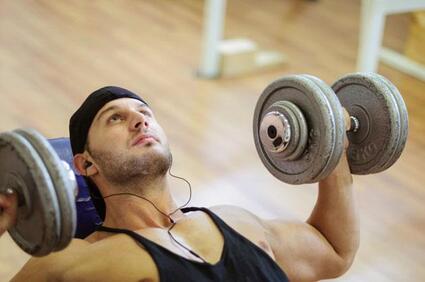 Gym Workouts are More Pleasurable when Music is your Companion Gym Workouts are More Pleasurable when Music is your Companion I was leaving my daughter to school the other day and I saw one of the students (must be in class 10 or 11) listening to music with his sophisticated headphones right until he entered the school campus. It worried me and I was about to go and talk about it when I saw another one with the same setup enter the premises. What are these kids doing with their earphones when their focus should be on the forthcoming test at school or the day’s schedule at classroom? This is just not the only scenario but these days there are a greater number of people with their earphones hanging around their neck than those with a book or pen in hand. At offices too, I almost see every other person working on his/her system listening to any kind of music that suits his/her taste. Many individuals listen to music while driving a car, studying for a test, doing some work or even while reading a book! There are arguments cropping up that reading is a hobby, driving needs focus and studying needs all the concentration that’s possible to achieve better results. But strangely, these are the guys that reveal that listening to music helps focus better on the job at hand. Some even go beyond the threshold commenting that staying without listening to music is more distracting. Relentless Source of Energy We are never going to deny that music helps us stay afloat in times of distress, helps us stay in a positive frame of mind, kindles our emotional well-being, has a soothing effect on the ears and replenishes energy levels. At the gym, music makes workout less taxing on the body, soulful music helps a pregnant woman stay calm through her pregnancy term and even come through delivery in a less-stressed way and no party or get-together is complete without a dash of remixes, blasting sounds through speakers and peppy songs! Music does seem to play an important role in our everyday life despite a vague picture still existing in each of our minds on the ‘how’s’ and ‘why’s’ of the intense impact of music on our brains. All said and done, what about those listening to music while preparing for an entrance exam, studying for their regular cycle tests or finishing upon a project with the deadline lingering even closer! This remains an open topic that brings in lots of speculations, controversial ideas and arguments! There have been numerous studies taking sides on the positives and negatives surrounding music’s impact on the brain and cognition. We’ve been told that music helps in lighting up multiple parts of the brain improving brain health, triggering memory enhancements, advancing spatial-temporal reasoning having a positive effect on creativity and clarity and a study from the University of Wales shows that music has a great effect on the attention span and memory but the effect varies greatly from person to person. Do you know what, hearing happy music (stimulating and peppy tunes) makes you sharpen your out-of-the-box thinking ideas or strategies. Sadly, we do have studies published in authentic journals that probe into the effect of music on creative problem solving. Three studies were carried out and in each study, the teams were measured for each o the participants’ cognitive abilities. Each of the subjects were given three words (‘dress’, ‘dial’ and ‘flower’) and were asked to come up with a fourth word (‘sun’) that paired naturally with each of these (https://psmag.com/news/listening-to-music-impairs-creativity). There were 15 men and 15 women involved in the study who were assigned to tasks. They listened to a pop song and results showed that the participants performed better while working in silence. Another experiment featured participants solving problems either listening to positive songs or only ambient library noises. While the mood of the participants improved significantly their creativity did not experience any upraise. Type of Music The type of music that you listen to and the stage of creativity that you are currently in determine the effect of music on your body. If you are in the initial stages of creativity which involves designing an approach, looking at various solutions and picking out the right one, listening to music might not be your cup of tea at this stage. Whereas, if you are halfway through your task, stuck up somewhere and looking for something creative to work upon taking a break and listening to good music might help you come up with new ideas and solutions for your creative work. In such times, what type of music would encourage you to solve the problem at hand? Of course, it should not be too funky, loud, distracting or fast as this creates problems with focusing on the task. The music that you listen to must be soothing, slow, maybe classical, pleasant and familiar music. An instrument playing in the background helps you refresh your mind but the studies supporting that music induces creativity is indeed limited. While you might find it tricky or suffocating to focus on something for a prolonged period without much clues on how to proceed, the silence might also bring in a new perspective to your thoughts and actions. The type of music you like depends on personal preferences. So, making an entire class of students listen to some instrument or classical music is not going to help you reap benefits. Research do show that music’s impact on brain creativity does vary from person to person. Choose the right type of music that brings out the best in you-if not for the creativity aspect at least to improve your mood and help you perform better. References Does Music Really Help You Concentrate? https://www.theguardian.com/education/2016/aug/20/does-music-really-help-you-concentrate Does Listening to Music Stimulate Creative Thinking. Or Stifle it? https://time.com/5626958/music-creative-thinking/ I train vigorously at the gym, eat a restricted diet and stay active yet I don’t lose weight-This is an often-heard complaint from individuals who strive hard to lose weight and get back into shape. There would have been days during which you sweat hard and maintain your balanced diet without going off the health routine; You look forward to checking your weight on the scale but instead of being rewarded for the efforts you are shocked to see the numbers-they have increased! One good thing about all this is that you are not alone and there are plenty others who have the same kind of feedback as yours. Each of our body is different and we all react in different ways to the same exercise and diet. There might be multiple reasons why you might not be able to see a decrease in your weight as listed below:
You might seem shaken up, almost at the verge of breaking down and negative thoughts come haunting but many of these seem to disappear after a good night’s sleep. Low exam marks, bad performance in an interview or shortage of money appear to be ideal reasons to keep you in a state of unrest but the sleep mode helps you make a fresh start the very next day equipped with a sense of confidence, strength and positivity. Time and again we are bombarded with articles insisting on the importance of sleep yet researchers have never been able to give a solid answer to the question ‘Why we sleep?’ All that we know is that sleep is the time during which our brain segregates between what needs to be stored or discarded, filters out unwanted neural connections, builds new ones, categorizes few events into the everlasting memory frame and also the only time during which the brain takes a short break from thinking! Lack of sleep can have debilitating effects on the body. For complete details of what sleep has got to offer us, all that you need to do is visit www.firsteatright.com. These are all known to us by now and a latest research has come up with an advantage of sleeping that’s been unheard of-enhancing fitness and future family line reproductive success.
Fitness Through Math Madness Math is not everyone’s cup of tea and many of us wish to have a secret fairy who could help us get away with math-related assignments and tests in flying colors. But the use of math doesn’t end with scoring marks. Even a tree’s age is calculated by counting the number of growth rings, we use math in our cooking while measuring water for our pulses and rice and finally, math is used in counting everyday expenses and income thereby enabling us to keep track of our money. So why not use it to understand the application of sleep and test whether it has any impact on fitness (here it means the number of future children, grandchildren, great grandchildren and more) and mortality rates. The research team analyzed the ‘fitness’ success of sleeping and not sleeping under a range of scenarios such as varying birth and mortality rates, and environments (vulnerable and safe environment). Results showed that under any conditions a sleeping strategy achieved better fitness results compared to staying active. Changes in birth rates but unaltered mortality rates also led to greater fitness in sleeping strategy than staying active indefinitely. It is best to stay most active in a safe sleeping environment where mortality rates were lowest whereas in a vulnerable environment the reverse seems to be true. Sleep evolved as a solution to ensure that species were not active when they were at a maximum risk of predation and also when their food supply was scarce. Whatever might be the circumstance it was found that sleeping and interrupted periods of inactivity was better than not sleeping at all. Its simply superb when we realize that mathematics is used for comprehending biology and moreover, understanding something as complex as sleep via math is a great leap. 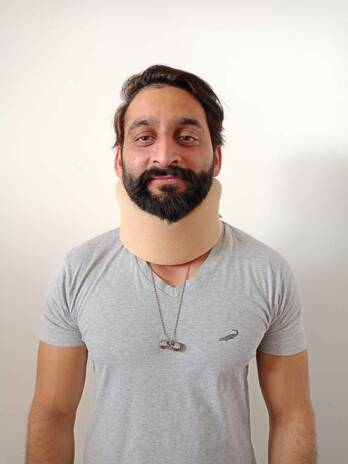 Never Wear a Soft Neck Collar Continuously Never Wear a Soft Neck Collar Continuously Have we ever spent time thinking about our neck that supports the weight of our head and is also involved in a significant amount of motion? Its also the part of the body that suffers from frequent pain owing to our work profiles. Individuals working on a computer, people employed in bank jobs or even an architect involved in doing intricate plans suffer from neck pain. So, what’s the solution for such an omnipresent problem? Neck Pain: Going Down the Spine The neck is a part of the long flexible column called the backbone which extends downwards. The neck (cervical spine) is composed of vertebrae that begin in the upper torso and end at the base of the skull. These vertebrae along with ligaments and muscles keep the spine stable. The neck is less-protected compared to the rest of the spine and this makes it vulnerable to injury and disorders that cause pain and restrict motion. Neck pains mostly last only for a few weeks and is a temporary condition that disappears in course of time. For a few others it keeps persisting calling for a medical diagnosis and treatment successively. Common causes of a neck pain include soft tissue abnormalities and this pain acts as the root cause behind pain in the upper back, shoulders and arms. By soft-tissue abnormalities we refer to some injury such as a road accident where the individual falls with his/her head forward or due to wear and tear which is common when the concerned person sits at a desk for a long time. Sleeping in awkward position is also a common cause for a neck pain. Relieving Pain Try any of the following methods to relieve neck pain:
While you might have been living based on a certain lifestyle neck pain forces the individual to reduce activities though bed rest is not recommended by doctors. It is essential to stay as active as possible without causing risk to the neck. Some major points to follow:
Preventing Pain One of the main causes of neck pain these days is working at a computer or a desk. If you do so, ensure that you:
|
AVOID FRAUD. EAT SMART.+91 7846 800 800
AuthorDietitian & Nutritionist Dr. Nafeesa Imteyaz. Archives
July 2024
Categories
All
Dr. Nafeesa's Blog @blogspot |
- Home
- Written Testimonials
- Consult
- Clinics
- Blogs
-
Diet & Nutrition
- Diabetes Reversal
- IVF IUI not needed for PCOS PCOD Infertility
-
Medical Nutrition
>
-
Disease & Conditions
>
- Infertility | PCOS
- Diabetes Mellitus
- Cholesterol
- Hypothyroid
- Kidney Problems
- Hypertension
- Cardiovascular Diseases
- Liver Diseases
- Gastro intestinal disorder
- Cancer
- Metabolic Disorders
- Orthopedic Disorders
- Eating Disorders
- Dietary Recall
- Weight Record Filled By Clients
- Online Payment Transaction Details
- Online Clients Weight Check Form
- Our Program Package Service Charges
- Weight Record 2017 Clients
- Measurements sent by Clients
- Terms & Conditions Of Payment
- Thanks. Your Form is Submitted
- Video Testimonials
- Lifestyle & Wellness
- Lifestyle & Wellness Blog
- Allergy & Intolerance
- Weight Loss / Gain
- Weight Loss / Slimming Blog
-
Disease & Conditions
>
- Life Cycle Nutrition >
- Sports Nutrition >
- Integrity in Nutrition
- Knowledge Centre
© COPYRIGHT 2022. ALL RIGHTS RESERVED. FRST HEALTHCARE PVT LTD.
Dr. Nafeesa Imteyaz of First Eat Right clinic, is the Best Dietitian Nutritionist in Bangalore. Best Dietitian Nutritionist in Pune. Best Dietitian Nutritionist in Hyderabad. Best Dietitian Nutritionist in Chennai. Best Dietitian Nutritionist in Mumbai. Best Dietitian Nutritionist in Delhi. Best Dietitian Nutritionist in Kolkata.


